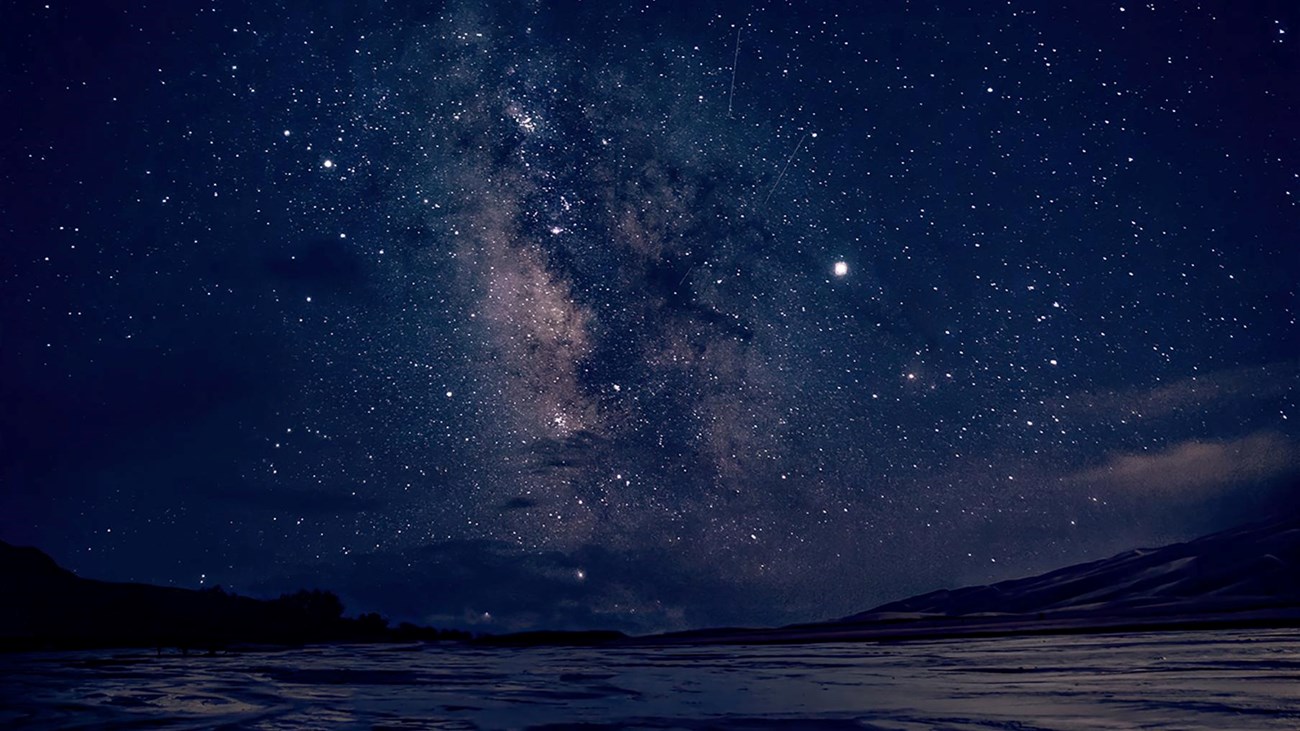Last updated: May 1, 2025
Thing to Do
Experience the Night

NPS/Patrick Myers
Half the park is after dark! Night at Great Sand Dunes can include dunes exploration under a bright full moon, viewing thousands of stars on a clear moonless night, listening for owls along the foothills, or observing migrating amphibians on a wet night. Watch a video about experiencing the night at Great Sand Dunes and a video about Jicarilla Apache Star Stories on our YouTube Channel.
With a combination of dry air, little light pollution, and high elevation, Great Sand Dunes National Park and Preserve is an excellent and easily accessible dark sky viewing location! In 2019, Great Sand Dunes was certified as an International Dark Sky Park by the International Dark Sky Association.
Planning to Experience the Night
- To see the most stars, plan your visit for moonless nights, or nights with a late moonrise. View a moon calendar for the month you plan to visit.
- Plan your visit on the full moon for a surreal walk on the dunes with no need for a flashlight.
- The Milky Way is highest and clearest in the evening sky during late summer and fall.
- Watch the weather forecast to time your visit for nights with little chance of rain. If it is rainy, watch for frogs, toads and salamanders along Medano Creek or in the dunes! Rainy weather is safe for exploration unless it is accompanied by lightning.
- When exploring the dunes on dark nights, make sure to plan in advance how you will find your vehicle after you return, because the parking lot/trail access is not obvious in the dark. When hiking back toward the Dunes Parking Lot, aim toward the left end of the long line of trees along Medano Creek. The parking area is located about 100 yards (100 meters) to the right of the end of the trees.
- Minimize your use of lights. Shining a bright flashlight will diminish your night vision for up to 30 minutes, limiting your view of the night sky and wildlife, and harming other visitors' experience. Use only a red light if needed.
- Keep an eye out for the night-life of the dunes, including camel crickets, kangaroo rats, toads, salamanders, coyotes, bobcats, and owls. Never touch wildlife, and remember that their nocturnal eyes are highly sensitive to light. Use only a red light if needed.
- Don't just depend on your eyes to experience the night. Feel the soft night breezes. Listen for the call of owls, the howling of distant coyotes, the calls of frogs and toads, the rustle of creatures in the forest, and the drum of kangaroo rats thumping warnings to each other. And smell the fresh scents of piñon pine, juniper, and seasonal flowers. You may notice that your senses grow sharper as you spend more time in dark and quiet locations.
Night Programs
Summer night programs are a good way to experience and understand the night sky and nocturnal ecology. Check the program schedule during summer months to see what evening programs are scheduled during your visit.
